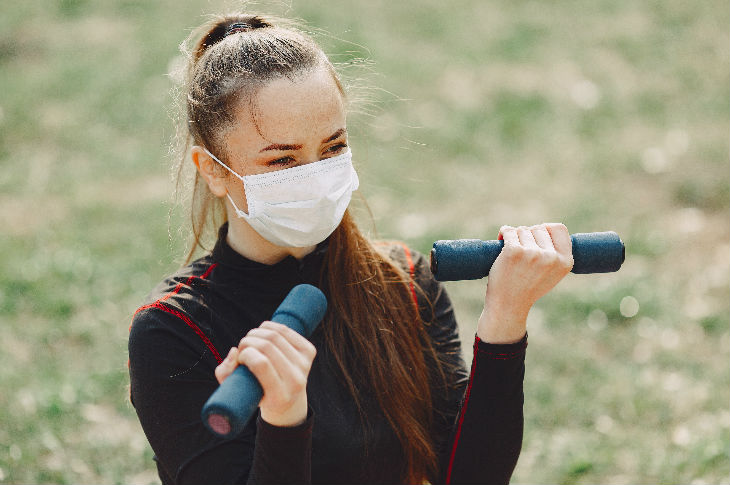
Beaches, parks, tennis courts, and community pools are beginning to reopen across the nation, as states relax their social distancing requirements. You may be eager to venture out for a scenic hike or enjoy a round of golf, but you may also have concerns about reducing your risk to COVID-19, when people in the community may still have it.
If you live in a state where the number of COVID-19 cases is declining, you may feel braver about visiting the beach or tennis court for outdoor exercise. “Given that the virus doesn’t survive as long in outdoor environments and because air dissipates more readily outdoors, the overall risk is likely lower,” says Mark Kortepeter, MD, MPH, professor of epidemiology at the University of Nebraska Medical Center and author of Inside the Hot Zone. “The best way to reduce risk is to try and avoid touching frequently touched surfaces and periodically washing your hands or using hand sanitizer.”
Before you leave home, here’s what you should consider:
Be cautious in parking lots. Driving to your destination? Be wary of socializing in parking lots, if you plan to meet a friend. “They may lapse into their pre-COVID casualness,” Schaffner says. “I know about a beach on the East Coast and a hiking trail in Oregon that had to be closed by the local health authorities because although things were fine on the trail and on the beach, they couldn’t control the congregation of people in the parking lot.”
If you park in a busy lot, wear a mask and head to your destination quickly.
Prepare for busy beach days. Beforehand, decide how comfortable you feel about being close to strangers. This can help you choose whether to stay or go if the crowd swells. “Usually at the beach or in a park, families or friends tend to cluster in smaller groups together, usually some distance away from each other,” Kortepeter says. “If you find others are getting too close for you to feel comfortable, whether closer than 6 feet or even farther away, feel free to move.”
Think beyond the swimming pool. When you visit an outdoor pool, consider the interactions that you may have with others when lounging in a chair, using the restroom, or buying a drink at the snack bar. “It’s not what happens in the pool, it’s what happens around the pool,” Schaffner says.
If it feels too crowded, consider leaving and returning on a different day at an earlier or later hour.
The US Centers for Disease Control and Prevention recommends wearing masks around other people, but they advise against wearing them in swimming pools. “If a mask gets wet, it will be harder to breathe through and will also lose its effectiveness,” Kortepeter says.
Breathe more easily while hiking quiet trails. Finding a hiking trail that’s a little less busy may help you unwind. It’s probably a good idea to bring your mask along with you, even if you’re only passing the occasional hiker. “If you are concerned someone passing by is too close [and don’t already have your mask on], you can put it on briefly as you see them approaching. Keep in mind, though, that when you put on or take off your mask, you risk contaminating susceptible areas of your face if your hands are contaminated.”
Stay vigilant while playing golf. Before and after playing golf, bypass the bar, indoor restaurant, and locker room for safety. “Play your round, and then go home—take your shower when you get home,” Schaffner says.
Feel comfortable about playing tennis. Singles tennis matches are perfectly socially distanced, so you don’t need to wear a mask while playing. Touching shared tennis balls is a low-risk activity that shouldn’t spread COVID-19. “Probably more important would be to minimize opportunities to touch your face,” Kortepeter says. “Consider wearing sweatbands on your head or wrists so that you are not inclined to touch your face because of sweating.”
Public bathrooms are fine. Because you’ll only spend a couple of minutes inside of a beach, park, or pool restroom, it’s a low-risk activity. “I think that’s very similar to a supermarket; you’re just close to other people in a transient fashion,” Schaffner says.
Wear your mask, and if there’s a line, stand 6 feet behind the person in front of you. When you’re through, wash your hands well with soap and water.
Enjoy outdoor dining. Frequenting an outdoor snack bar at the park, beach, or pool should be relatively low-risk. “In the outdoor environment, I am less concerned about the distance between tables, as people at other tables are not interacting directly face-to-face with you,” Kortepeter says. “Higher-risk in that setting [is] if you have to stand in line with others when purchasing your food.”
Consider eating earlier or later so that the outdoor tables aren’t crowded. Wash your hands or use hand sanitizer before eating, especially if you handled money.
This information is for educational purposes only and is not intended as a substitute for medical diagnosis or treatment. You should not use this information to diagnose or treat a health problem or condition. Always check with your doctor before changing your diet, altering your sleep habits, taking supplements, or starting a new fitness routine.

If you have questions about a Fitbit tracker, product availability, or the status of your order, contact our Support Team or search the Fitbit Community for answers.
Please note: Comments are moderated and may not appear immediately after submission.